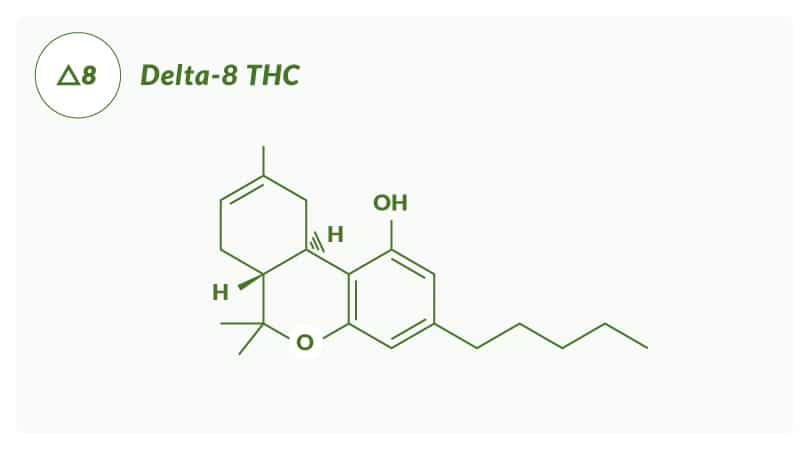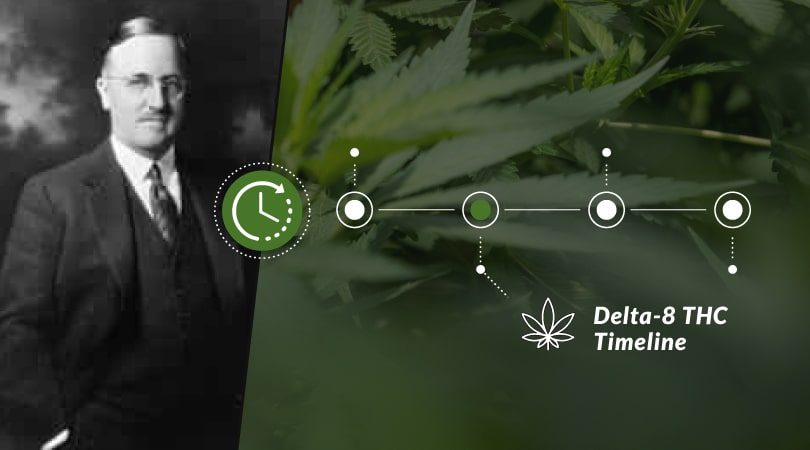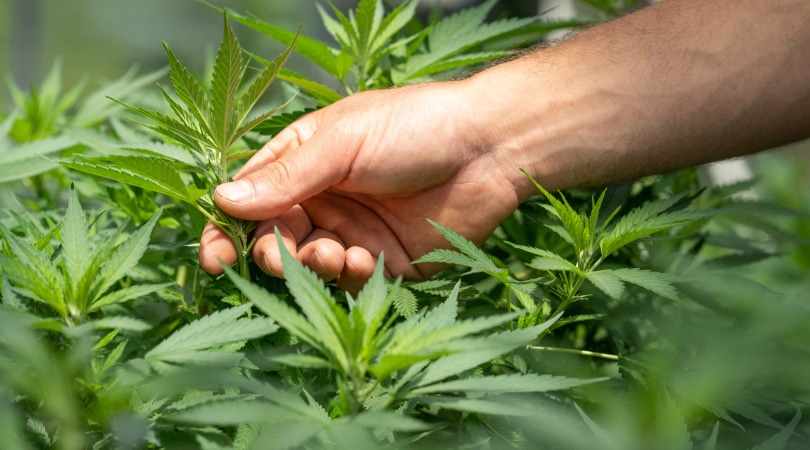
Delta-8 THC History – Research, Legal Controversies, Safety, and More!
Delta-8 THC is revolutionizing the cannabis world. Only in the last two years, it has generated $2 billion in sales in the U.S. But did you know that we’ve known about it for more than six decades? Let’s delve into Delta-8 THC, looking at what exactly is it, its history, legal challenges, and future prospects.
What Is Delta-8 THC?

Delta-8 THC has quickly become the next big thing in the cannabis world. Why? Because unlike its cousin, Delta-9 THC, it gives a milder effect, reducing the chances of side effects. What sets Delta-8 THC apart from cannabis-derived cannabinoids is its unique molecular structure that has a supplementary double bond.
This structural difference significantly influences its interaction with the body’s endocannabinoid system (ECS), making the user’s experience very different from those using other cannabis products.
Delta-8 THC History – A Timeline

1941: Partial synthesis of Delta 8-THC published by Roger Adams and colleagues at the University of Illinois.
1942: Research group studies physiological and psychoactive effects of Delta 8-THC in human volunteers.
1965: Total syntheses of Delta 8-THC achieved.
1966: Chemical structure of Delta 8-THC isolated from cannabis characterized by Richard L. Hively, William A. Mosher, and Friedrich W. Hoffmann at the University of Delaware.
1967: Stereospecific synthesis of Delta 8-THC reported by Raphael Mechoulam and colleagues at the Weizmann Institute of Science. (Revolutionized cannabinoid synthesis by enabling the creation of a single, precisely structured Delta 8-THC molecule, departing from earlier methods that yielded various molecular configurations or mixtures.)
1975: Study finds Delta-8 THC may shrink cancerous tumors in rats (“Antineoplastic activity of cannabinoids”).
1995: Mechoulam and a colleague release a study indicating Delta-8 THC may significantly reduce nausea caused by chemotherapy in pediatric cancer patients.
Mid-1980s: Allyn Howlett’s laboratory proves evidence of cannabinoid receptors in the body.
1990s: Scientific community confirms presence of CB1 and CB2 receptors in the body; successful cloning of CB1 receptors in rats and humans; Mechoulam’s lab discovers anandamide – the first known endocannabinoid.
1990s onwards: Mechoulam’s lab delves deeper into the endocannabinoid system (ECS), leading to a comprehensive understanding of how cannabinoids operate within the body.
Legal Controversies Around Delta-8 THC

The laws ruling on substances’ legal status like Delta-8 THC significantly impacted its study. Despite its discovery in the 1940s, comprehensive research into Delta-8 THC began only recently due to legal limitations, particularly in the United States.
In 1970, the Controlled Substances Act made cannabis illegal and made obtaining authorization for cannabis research difficult. It was typically only granted to study Delta-9 THC, the more prevalent variant.
The recognition of Delta-8 THC as a derivative of hemp came about after the 2018 Farm Bill officially legalized hemp. However, this shift in its status sparked debates. Critics argued that the bill’s wording created a loophole, allowing for the legal sale of Delta-8 THC.
The ambiguity stems from the bill’s emphasis on legalizing hemp and CBD products without mentioning Delta-8 THC explicitly, sparking debates on its legality. The Farm Bill’s criteria, prohibiting cannabis products with over 0.3% Delta-9 THC by dry weight, indirectly left out Delta-8 THC.
This complexity arises due to Delta-8’s chemical resemblance to THC despite being derived from hemp, causing a legal dispute regarding its classification.
That’s why on a federal level, today Delta-8 THC is legally accessible.
At the bottom of things, the controversy revolves around the absence of regulations, raising the alarm as unscrupulous manufacturers may introduce harmful byproducts or fail to ensure the claimed amount of Delta-8 THC in their products. That’s why you should learn how to spot high-quality Delta-8 THC products.
This issue underscores the need for comprehensive regulation to ascertain the safety and reliability of all Delta-8 THC products available in the market, emphasizing that the compound itself might not pose inherent dangers, but rather the absence of proper oversight on its production and distribution.
What The Future Holds for Delta-8 THC
Delta-8 THC’s future relies on several key elements: regulatory changes, consumer demand, and industry progress. Predictions indicate substantial market growth, with the Delta-8 THC/CBD market expected to reach $26.2 billion by 2026.
Uncertainties still revolve around impending legislative changes, particularly the 2024 Farm Bill, poised to reshape the market—potentially introducing strict regulations, a ban, or maintaining the status quo. Stakeholders now await the bill’s influence, recognizing its power to redefine the market dynamics of Delta-8 THC and similar cannabinoids.
In Summary
As Delta-8 THC continues to captivate the cannabis market with its unique properties, the road ahead is marked by a balance of legal clarity and industry evolution. For now, studies have shown promising potential uses for this amazing cannabinoid. At Vitality, we are committed to offering a range of high-quality Delta-8 THC products such as Delta-8 oil and carts, among others.
As regulations evolve in the cannabis industry, setting clear rules not only ensures legal compliance but also prioritizes the safety of consumers. This pivotal step toward a well-defined framework assures a safer environment for Delta-8 THC users, building trust and reliability in its market.
